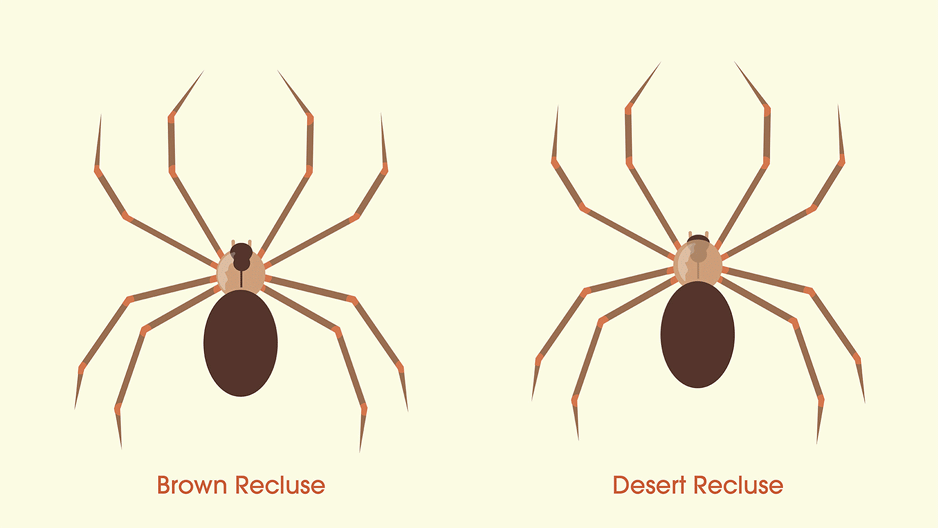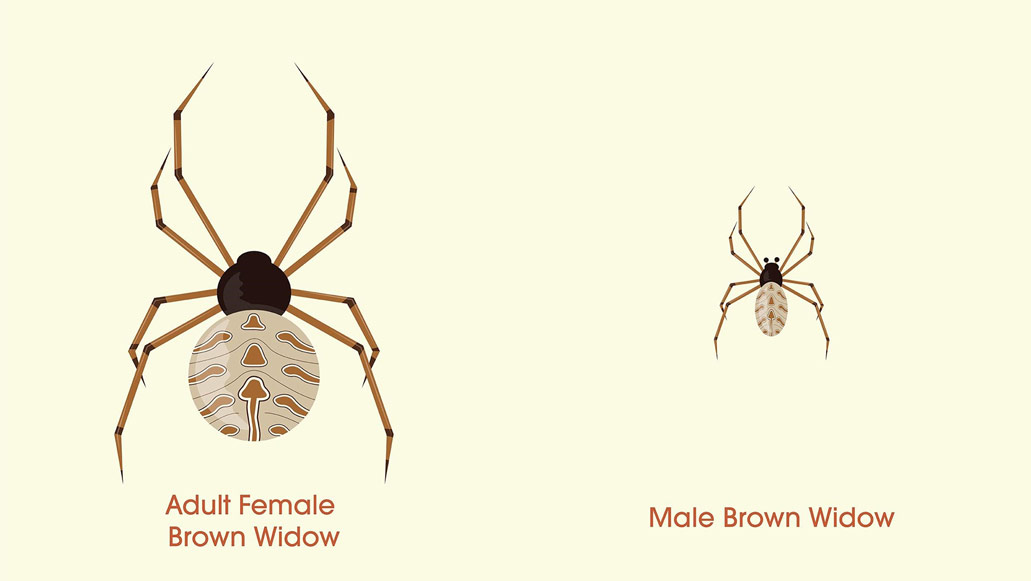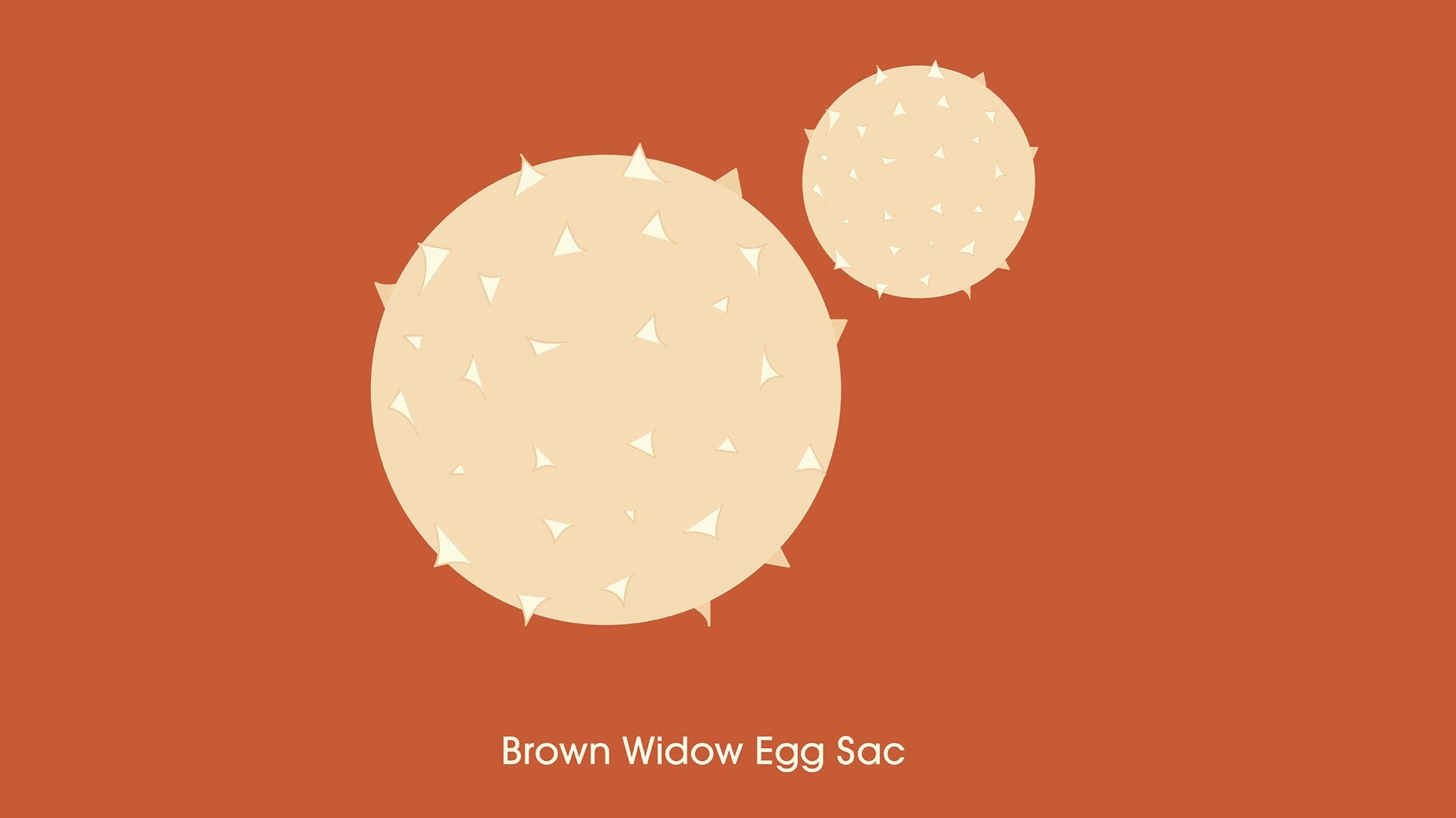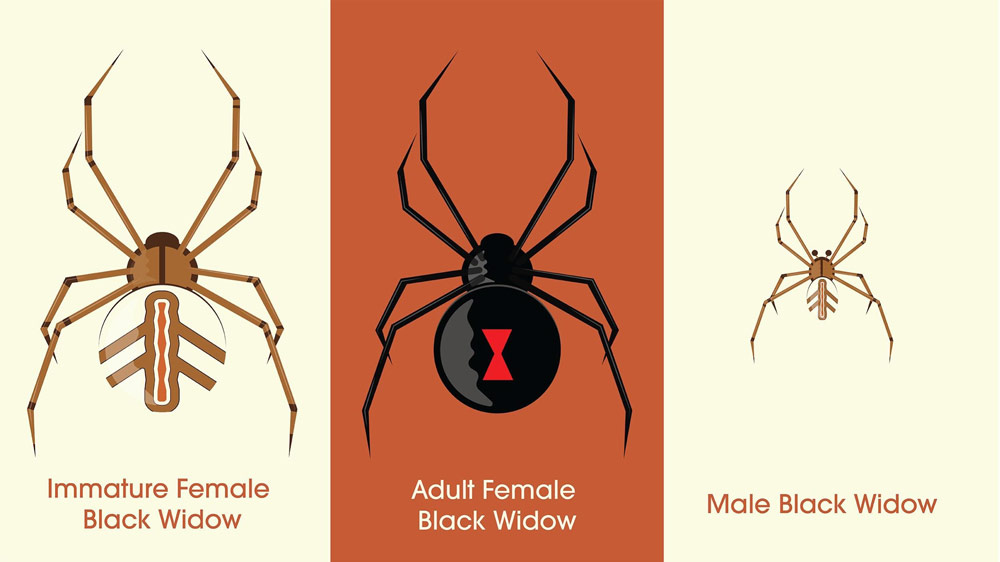Are There Brown Recluse Spiders in Southern California?
Pest Control and Extermination TipsSpider Control and Extermination Articles
Long Story Short: There Are No Brown Recluse Spiders in SOCAL
Contrary to all the hysteria surrounding brown recluse spiders and the dangers they pose to humans, residents in Southern California don’t need to fret over the brown recluse spider.
Brown recluse spiders simply do not live in any area of Southern California, including:
- Palm Springs
- Coachella Valley
- San Diego
- Orange County
- Riverside
- San Marcos
- Los Angeles
Time for a deep sigh of relief, right? Don’t exhale just yet. Although there are no brown recluse spiders nearby, we do have a few spiders crawling amongst us that can be dangerous to our well-being.
At Lloyd, we want to settle the debate once and for all: The spider you are seeing in the warmer areas of SoCal simply isn’t a brown recluse, but rather, it’s likely a desert recluse—which is very similar to the demonized brown recluse.
Additionally, Southern California features spiders like brown widows and black widows, although these spiders rarely bite humans unless aggressively handled or provoked. Bites are so rare that there hasn’t been a single bite amongst our field staff who tangle with them far more than a normal person would.
While we may be free from the dangers of the brown recluse, we have plenty of other spiders that should be on our radar as we’re in our yards, around our homes, or out and about. To better identify the exact species of spiders you might encounter, our pest control experts have put together this guide on all things dangerous spiders in Southern California.
Desert Recluse vs. Brown Recluse: What’s the Difference?
Southern California Recluse Characteristics

Both the desert recluse (L. Deserta) and the brown recluse (L. Reclusa) belong to the family Loxosceles, meaning “with slanting legs” in Greek. These spiders feature similar color variations, but the brown recluse typically features darker markings on their bodies than the desert recluse.
The brown and desert recluse spiders feature:
- Light tan, dark brown, or yellowish-brown color
- Uniform color across cephalothorax (fused head and thorax), abdomen, and legs
- Oval abdomens
Brown recluse and desert recluse spiders are known for their “reclusive” behaviors, avoiding potential predators at all costs. Because they are nocturnal, they do most of their hunting at night and hide during the day.
Violin or Fiddle-Shaped Markings
As the brown recluse’s claim to fame, they feature a violin-like marking on the top of their cephalothorax. Confusingly enough, some desert recluse spiders can possess similar violin-like markings on their backs, but not always. If they do, their violin mark will be much lighter.
Recluse Venom
The brown recluse and the desert recluse both cause Loxoscelism by injecting a small dose of venom—known as sphingomyelinase D, a dermonecrosis-causing enzyme—while striking their prey or a would-be predator. In layman’s terms, necrosis-causing enzymes cause human tissue to deteriorate, meaning severe bites can eat away at your flesh.
While desert recluses contain the same type of venom as brown recluses, the chances of you being bitten by one are extremely slim—and the chance of being mortally wounded by one is even slimmer.
In fact, there hasn’t been a single reported death caused by a desert recluse bite in Southern California. Additionally, most bites from these recluses won’t inject you with enough venom to eat away at your skin. Recluse bites typically go away on their own, leaving little to no harm done.
Regardless of this fact, if you think you’ve been bitten by a desert recluse, it’s important to seek out medical attention. Often, suspected recluse bites are bites from other arthropods or undiagnosed diseases and bacterial infections.
Brown Widows
Scientifically known as Latrodectus geometricus, the brown widow spider has been spinning webs across Southern California since the early 2000s. Thought to have evolved from Africa but discovered in South America, these arachnids are venomous and come in a variety of colors, making them difficult to distinguish from their eery cousin, the black widow.
Brown Widow Characteristics

The brown widow comes in a variety of brownish colors throughout its life stages.
Spiderlings and Adolescents
Brown widow spiderlings and adolescents look almost identical to their black widow counterparts, as they feature:
- Tan legs
- Tan cephalothorax with a black stripe
- White, rounded abdomen with black spots
To differentiate the two, always remember that brown widow spiderlings and adolescents usually have more brown on them—or lighter brownish variations—than their black widow counterparts.
Female Brown Widows
The female brown widow spider can look strikingly like an immature female black widow, especially once both spiders are about half grown. It’s important to note that immature female black widows have an orange-colored, longitudinal stripe that runs up the abdomen, while the immature brown widow has a darker, blotchier longitudinal stripe that only goes about halfway up the abdomen.
Common female brown widow features include:
- Light- to dark-brown cephalothorax and abdomen
- Tan and brown-banded legs
- Orange hourglass shapes on abdomens
While these characteristics resemble the most common variations of adult female brown widows, their colors can differentiate drastically. Some adult females can be so dark brown that they appear like black widows, with slightly reddish- or yellowish-orange hourglass markings.
Male Brown Widows
Adult male brown widows are significantly smaller than females and their black widow counterparts, featuring similar colorations as brown widow spiderlings with two large papal bulbs—copulatory organs of the male spider—near the front limbs.
For a highly detailed, comprehensive list of brown widow identifiers, check out UC Riverside’s guide on how to identify brown widow spiders.
Brown Widow Egg Sacs

Known as the easiest way to identify brown widows, their egg sacs are tan and spherical with sharp, silk points sticking out of them. These sacs help differentiate from the black widow’s, as their eggs feature white, smooth, and round surfaces.
Brown Widow Venom
Brown widows have a neurotoxic venom—a venom that affects nerve-muscle function—that causes Latrodectism, which can include symptoms like:
- Pain
- Muscle rigidity
- Vomiting
- Sweating
Thankfully, brown widows simply don’t have the power or the neurotoxin reserves to cause Latrodectism in most human bite victims. Brown widow bites often aren’t fatal either, as the effects of the toxin remain in the bite area and surrounding tissue. Normally, brown widow bites leave behind a red mark typical of a spider bite, healing on its own over time.
Western Black Widows

Arguably the most recognizable spider on the planet, the black widow—or Latrodectus hesperus—is a fear-inducing arachnid with a bigger dose of venom than the brown widow or recluse.
Black Widow Characteristics
Physical characteristics of adult female black widows include:
- Bright red, hourglass-like abdominal mark
- Shiny black pigment across abdomens, cephalothorax, and legs
- Rounded abdomen
Also, when female black widows have consumed a large meal, their bodies can become so enlarged and stretched that they take on a brown or plum hue.
Immature Female and Male Black Widows
Much like the brown widow, immature female and male black widows are tan with brown-banded legs. These black widows feature a white abdomen with brown markings and are significantly smaller than the adult female widow.
Black Widow Venom
Although bites from adult female black widows are rare, they can pack a serious punch. With a larger venom reservoir and stronger biting muscles than brown widows, these spiders deliver a dose of neurotoxin into their prey and potential predators. It’s important to note that neurotoxins do not function like dermonecrosis-causing enzymes, meaning their bites do not cause flesh to deteriorate.
Although a black widow bite is often painless—or simply feels like a pinprick—human bite victims will begin to feel symptoms within an hour. These bites appear as small red marks that sometimes feature red streaking away from the wound.
According to UC Agriculture and Natural Resources, symptoms include:
- Rigid stomach muscles, which some medical professionals have misdiagnosed as appendicitis
- Sweating, sometimes of just the bitten body part, such as a bite to the hand that results in only the arm sweating profusely
- Pain that can be local, radiating, or regional
- Urine retention
- Numbness, agitation, fever, and patchy paralysis (less common)
While these are the most severe symptoms of a black widow bite, most human bite victims experience flu-like symptoms that last a few days.
Note: If you suspect a black widow bite—or spotted a black widow biting you—seek professional medical attention.
How to Protect Your Family from These Dangerous Spiders
All spiders—including brown widows, black widows, and the desert recluse—are fond of spaces like covered barbecues, covered patio furniture, and the inside of garden shoes that are often stored outside or in a garage.
It makes sense to exercise extra care when uncovering patio furniture or turning on the gas to the barbecue to make sure you’re not grabbing at any of these spiders. Also, if you store any shoes outside of your house, make sure you shake them before slipping into them.
Professional Spider Control in Southern California
At Lloyd Pest Control, we want you to know that there aren’t brown recluse spiders in Southern California, but there are a few other spiders—like desert recluses, brown widows, and black widows—that call SoCal home.
With more than eight decades of experience treating pest pressures in Southern California, we have professional spider treatments and pest barriers that can help. Contact us today for a free instant quote. But never forget that perhaps the best way to rid yourself of a spider is a swift whack with the bottom of a shoe. And don’t worry if you miss the first time; they won’t chase you. We promise!






